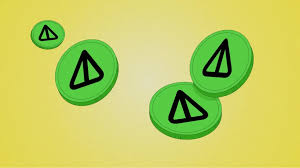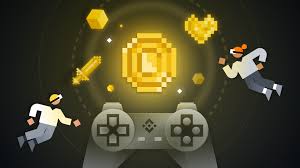Hook: Imagine turning your favorite messaging app into a gaming powerhouse where millions of players earn tokens just by tapping their screens. That’s exactly what happened with Telegram in 2024, and it’s reshaping the future of web3 gaming. But how did it all start, and why is this a game-changer for the blockchain world?
The Big Picture: What’s Going On?
In 2024, Telegram, a messaging app with 950 million users worldwide, introduced mini-games integrated with the blockchain. These games offered players token rewards for participating. One game, “Notcoin”, stood out and sparked a revolution in web3 gaming on the TON (The Open Network) blockchain.
Within a year, the number of accounts on the TON network exploded from 4 million to 128 million, making it one of the fastest-growing blockchain ecosystems. Even TON’s native cryptocurrency, toncoin, saw its value soar, reaching a market capitalization of $14 billion.
The Spark: How Did It Start?
- “Notcoin” and Its Airdrop:
- In January 2024, “Notcoin” launched on Telegram.
- By May, it conducted a massive airdrop of 80 billion NOT tokens, worth $1 billion.
- This move made the game highly accessible and encouraged new users to join.
- Massive Engagement:
- Around 20% of Telegram’s global users began playing games like “Notcoin.”
- Players needed to create web3 wallets to participate, introducing millions to blockchain technology.
- Follow-Up Success:
- Other games like “Hamster Kombat”, “Yescoin”, and “Catizen” followed.
- Although these games didn’t reach “Notcoin’s” popularity, they solidified Telegram’s position in web3 gaming.
Why It’s Important: Key Lessons
- User Acquisition Made Easy:
- One of web3’s biggest hurdles has been attracting users. By integrating games directly into a popular app, Telegram brought blockchain to everyday users effortlessly.
- Breaking Barriers:
- Web3 gaming often feels intimidating due to complex setups. Telegram’s approach made it simple and fun, giving millions their first taste of blockchain.
- A New Distribution Model:
- Traditional platforms like Apple, Google, and Steam are restrictive toward blockchain games. Telegram offered a free and open space for developers to launch their games, bypassing these barriers.
The Future: What’s Next for Web3 Gaming?
- Mid-Core Games Are Coming:
- Experts believe the next wave of successful Telegram games will be more strategy-driven and sustainable, offering in-app purchases and deeper gameplay.
- These games, known as mid-core games, could generate even greater revenue and engagement.
- Bigger Players Joining In:
- Major companies like Animoca Brands and Pantera Capital are now investing in Telegram’s ecosystem.
- This support will attract experienced developers to create innovative games.
- Sustainability Matters:
- Simple “tap-to-earn” games may fade, but projects with long-term value and meaningful gameplay will thrive.
Why This Matters for You
- Key Words to Remember:
TON Blockchain, Notcoin, Airdrop, Mid-Core Games, Tap-to-Earn, User Acquisition. - Building Your Knowledge:
This story shows how blockchain gaming can scale when barriers to entry are removed. By learning about initiatives like TON and Telegram, you can understand how blockchain technology is reaching mainstream users. - The Big Takeaway:
The success of Telegram gaming is proof that web3 isn’t just for crypto enthusiasts anymore—it’s becoming part of everyday life. This shift could pave the way for new opportunities in blockchain development, investment, and gaming.
Catch the Wave: The rise of web3 gaming on Telegram is more than just a trend—it’s a glimpse into the future of how blockchain can integrate seamlessly into our daily lives. Whether you’re a gamer, an investor, or a developer, now is the time to pay attention.



